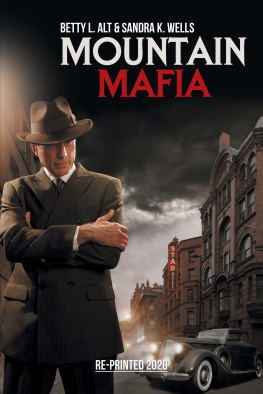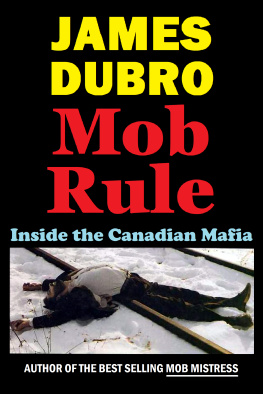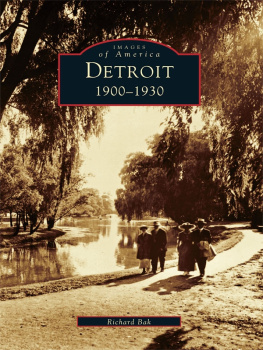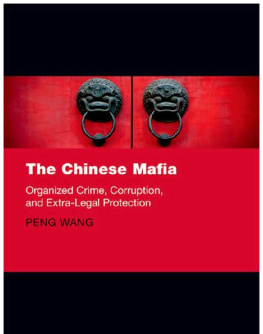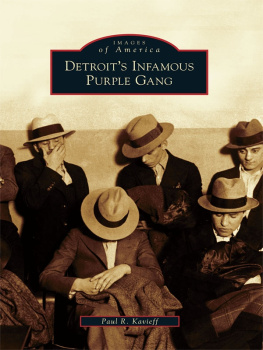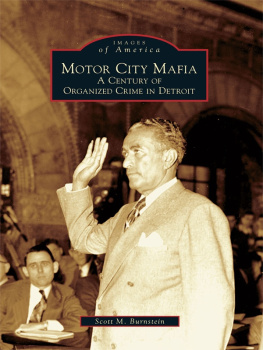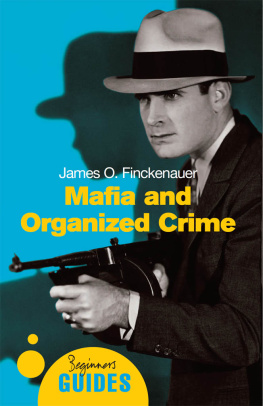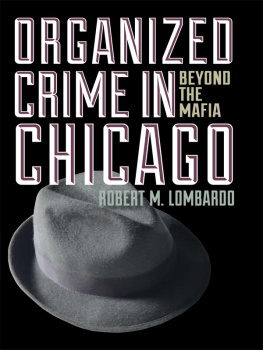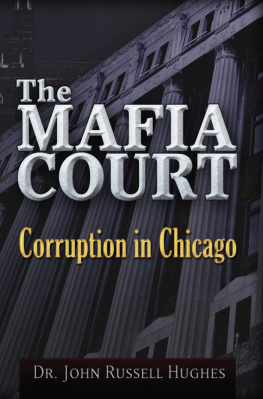

Published by The History Press
Charleston, SC
www.historypress.net
Copyright 2015 by James A. Buccellato
All rights reserved
First published 2015
e-book edition 2015
ISBN 978.1.62585.549.7
Library of Congress Control Number: 2015950780
print edition ISBN 978.1.46711.754.8
Notice: The information in this book is true and complete to the best of our knowledge. It is offered without guarantee on the part of the author or The History Press. The author and The History Press disclaim all liability in connection with the use of this book.
All rights reserved. No part of this book may be reproduced or transmitted in any form whatsoever without prior written permission from the publisher except in the case of brief quotations embodied in critical articles and reviews.
CONTENTS
FOREWORD
Early Organized Crime in Detroit is an important book by an important author. The early days of the Detroit underworld were groundbreaking and sent ripple effects throughout the entire United States of America. Some of them are still felt today. Dr. James Buccellato is a seminal researcher in this field and the main authority on the subject in Michigan. The fresh insights he provides in this project and the extensive detail he goes into to flesh out the fascinating roots of mob activity in the Great Lakes region only builds on the already-rich tapestry that surrounds it and cements his first book effort as a smashing success and key teaching tool for the future.
James and I are kindred spirits, and Im proud to call him a friend and colleague. We met at one of my book signings several years ago and immediately hit it off. I knew I had found an instant partner in crime. Our collaborations are some of the highlights of my career. I consider the chapter we co-wrote in my third book (Detroit True Crime Chronicles) delving into international drug smuggling in Detroit in the 1950s and 1960s a crowning achievement in my personal publishing endeavors.
The Motor City in the first part of the twentieth century was as influential nationwide in criminality as it was for birthing the automotive industry. During Prohibition, Detroit became the epicenter of bootlegging activity in America due to the areas proximity to Canada. Immediately after Prohibition, the Detroit underworld transformed itself into ground zero for the North American narcotics industry and mob infiltration of organized labor. This led to watershed gangland innovation in and throughout Southeast Michigan, lending to its well-earned reputation as unique mafia and street gang terrain. So unique, in fact, specifically in terms of bloodlines, that many of the same names of the men who ran the mob in Detroit in the 1920s and 1930s were or are still in charge of the rackets well into the new millennium. The names Tocco, Corrado, Palazzolo, Bommarito, DAnna, Meli and Mirabile remain prominent in Detroit mafia circles in 2015, just as they were almost one hundred years ago.
Local crime lords reached tremendous heights of power, and the allegiances and rivalries they forged were complex. With his exceptional authorship and research, Buccellato places them in proper context while shedding new light on them and providing a stellar, pinpoint analysis of the whys, whos, whats and wheres. If you are someone who appreciates the study of history, politics, the mob, the labor movement or sociology, this is a must-read.
SCOTT M. BURNSTEIN
Author, historian, investigative journalist
August 2015
ACKNOWLEDGEMENTS
There is not enough room in these pages to express my gratitude to everyone who made this book possible. I will do my best, however, to say thank you to the following people: I have to thank my loving, creative and patient wife, Kristen. There would be no book without her kindness, insight and belief in me. I want to thank the Boschian, Karth, Malec, Malecki and Paga families for their generosity and enthusiastic support. I am especially grateful to Karen for conducting research at the Brooklyn Public Library.
Special appreciation goes to Scott M. Burnstein. His pioneering research inspired me to take on crime as a research agenda. He is a generous friend and co-conspirator. David Critchley is another researcher who deserves special thanks. Critchleys research on the Detroit mafia motivated me to dig deeper into my ancestry. David helped me get started with my research, and I am extremely grateful. Other researchers who were more than kind along the way include Justin Vitiello, Lennert Van t Riet, Richard Warner and Angelo Santino. I also thank Mike Tona, Mike Rizzo, Al Bradley, Westin Pulizzi, Bill Feather and Barbarian.
I am grateful to Jerry Herron, Kevin Rashid, Stuart May and the Irvin D. Reid Honors College at Wayne State University for their generous support of this project. I also thank my Honors partners in crime: Kevin Ball, Justin Rex, Aaron Martin, Elizabeth Hudson, Beth Fowler and Kevin Deegan-Krause. A number of other Wayne State University colleagues deserve recognition. I can never thank Nora Jarbou and Cinzia Acciani enough for their research assistance and help with translations. Even more importantly, they are my friends. Thanks to Anna Yaldo for mapping out Detroit crime scenes.
The following archivists and librarians deserve exceptional praise for assisting my work: Judith Arnold and Cynthia Krolikowski and the Wayne State University libraries, Elizabeth Clemens and the Walter P. Reuther Library, Jill Arnold and the entire staff at the State Archives of Michigan, Joann Mannino and the Detroit Public Library, Umberto Santino and the Centro Siciliano di Documentazione in Palermo, Sicily.
I am privileged to be a member of the Buccellato family and have to thank my North American and Sicilian relatives. Fred, Dawn, Fiora, Rose, Rosa, Peter, Marie, Vita Marie, Flora, Laura, Jim, Vita, Chase and my father deserve special acknowledgement for sharing the family history with me. I hope you enjoy the book. I also thank the Bonanno/Labruzzo family (Gary Abromovitz, Bambi, Rosalie and Anthony) for their hospitality when I was in Tuscon.
Finally, I thank Krista Slavicek and The History Press for their guidance and confidence in this book.
CHAPTER 1
THERE IS NO MAFIA IN DETROIT
Giuseppe Notos head was nearly severed when investigators found his body on November 19, 1901. The murder occurred in Springfield, Illinois, but detectives on the case believed the main suspect, Filippo Tocco, was hiding in Detroit. Tocco initially fled to St. Louis, where he had relatives, but after a few days, he left for Detroit, seeking the protective shelter of friends in the area. Eleven days after the murder, Detroit detective Ferdinand Palma heard rumors that Tocco was holed up at a house on Macomb Street. As one of Detroits most prominent Italian residents, Palma knew most of his fellow immigrants living in the area known as Little Sicily (or the Italian colony). As a result, an unfamiliar face like Toccos would stand out in the close-knit community.
After searching a handful of homes, Palma discovered an individual he didnt recognize. Moreover, the person acted nervous as Palma asked about his identity and purpose in Detroit. The detective brought the stranger in for questioning. The suspect gave an assumed name but soon admitted to Palma that he was the man police were seeking. Tocco admitted his identity but vehemently denied the murder charges. He claimed he had acted in self-defense. Even more provocative, however, Filippo Tocco claimed that he and Giuseppe Noto were members of an Italian secret society known as the mafia.
Next page

